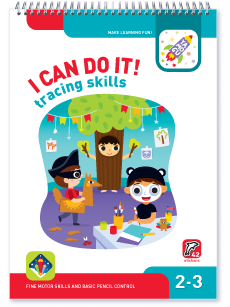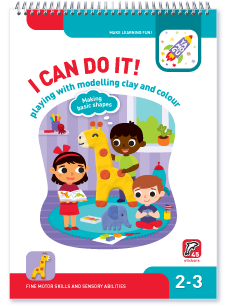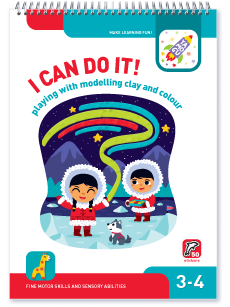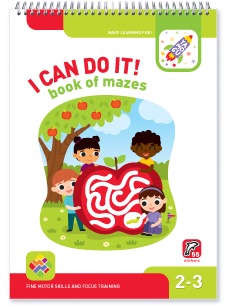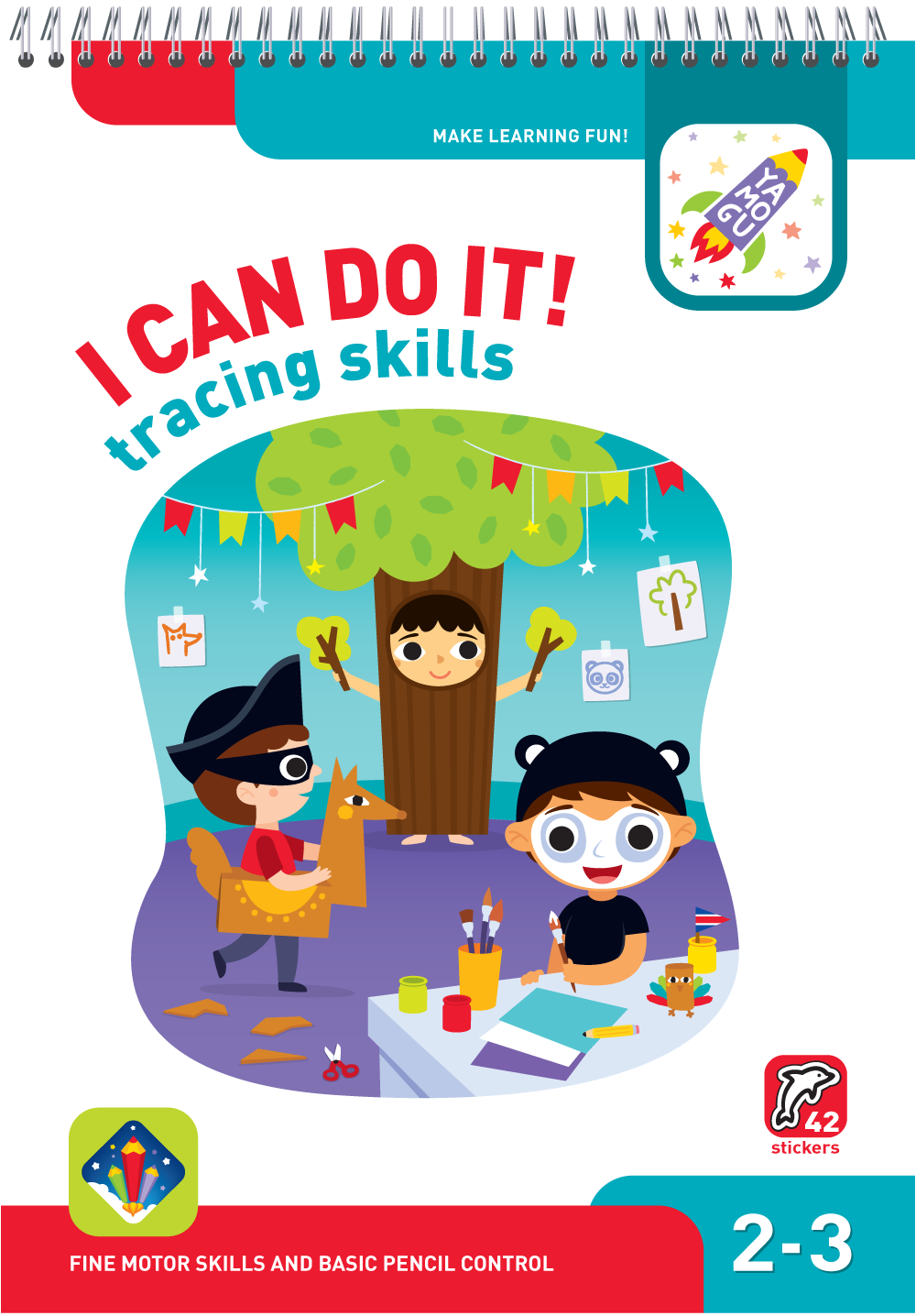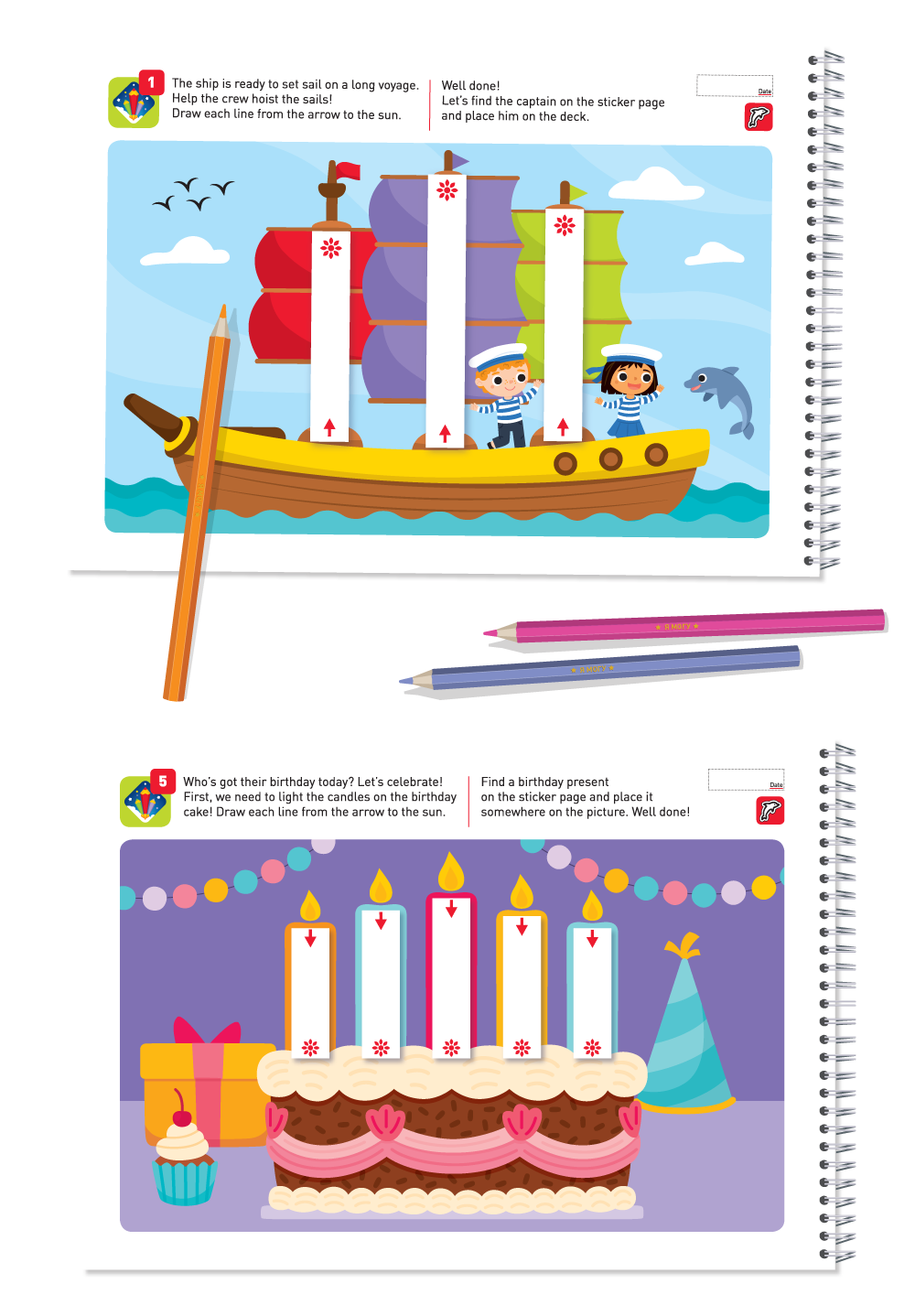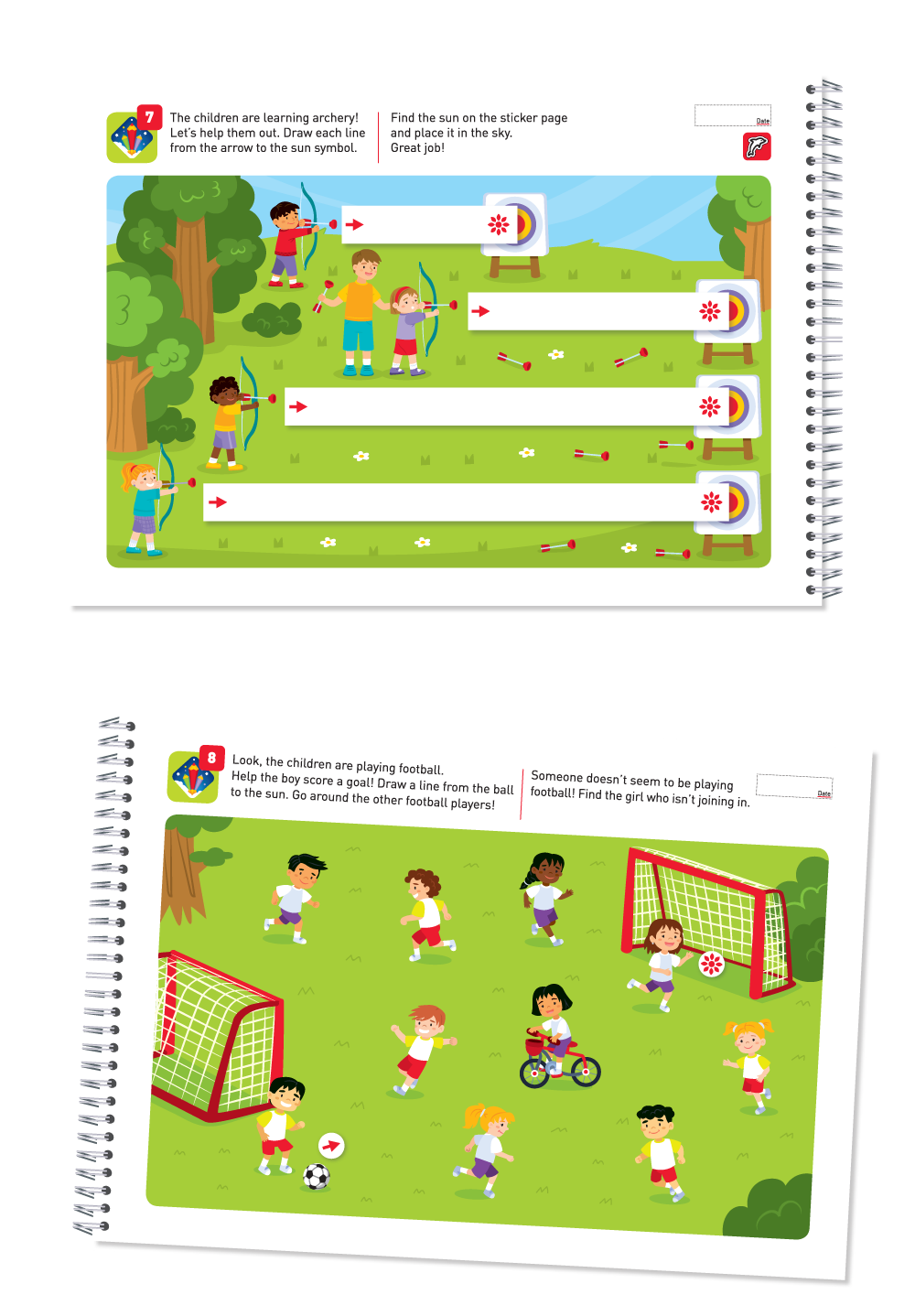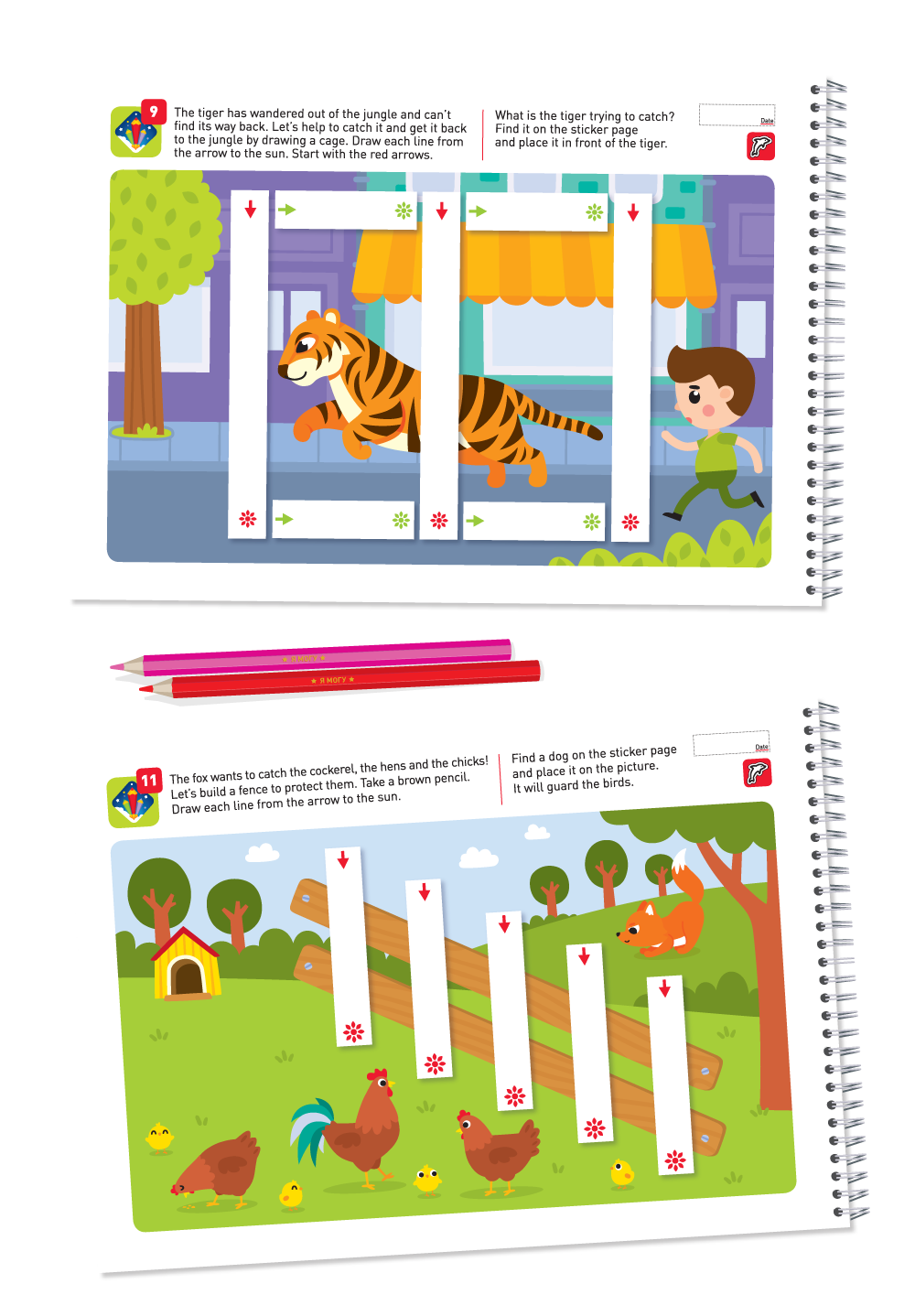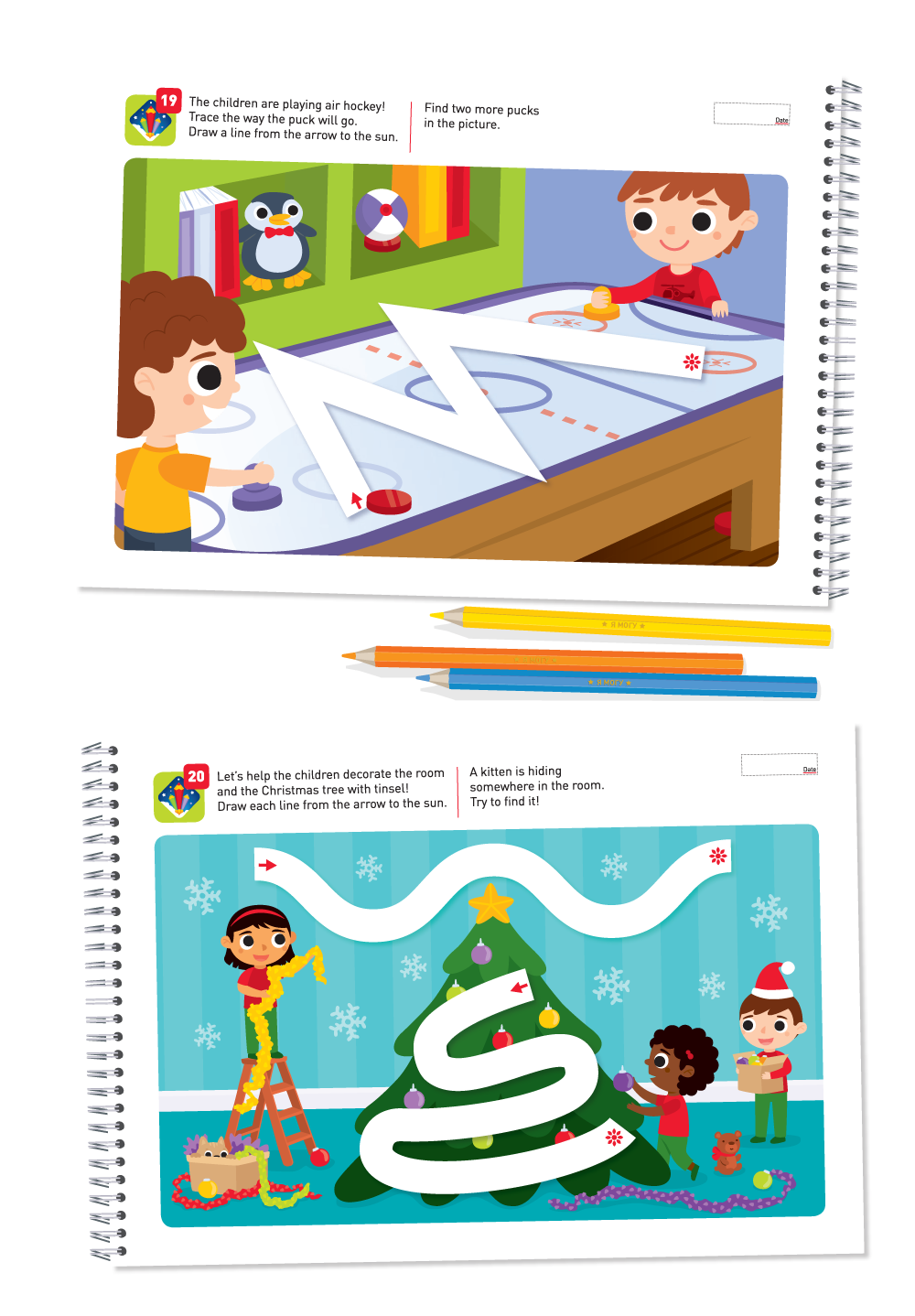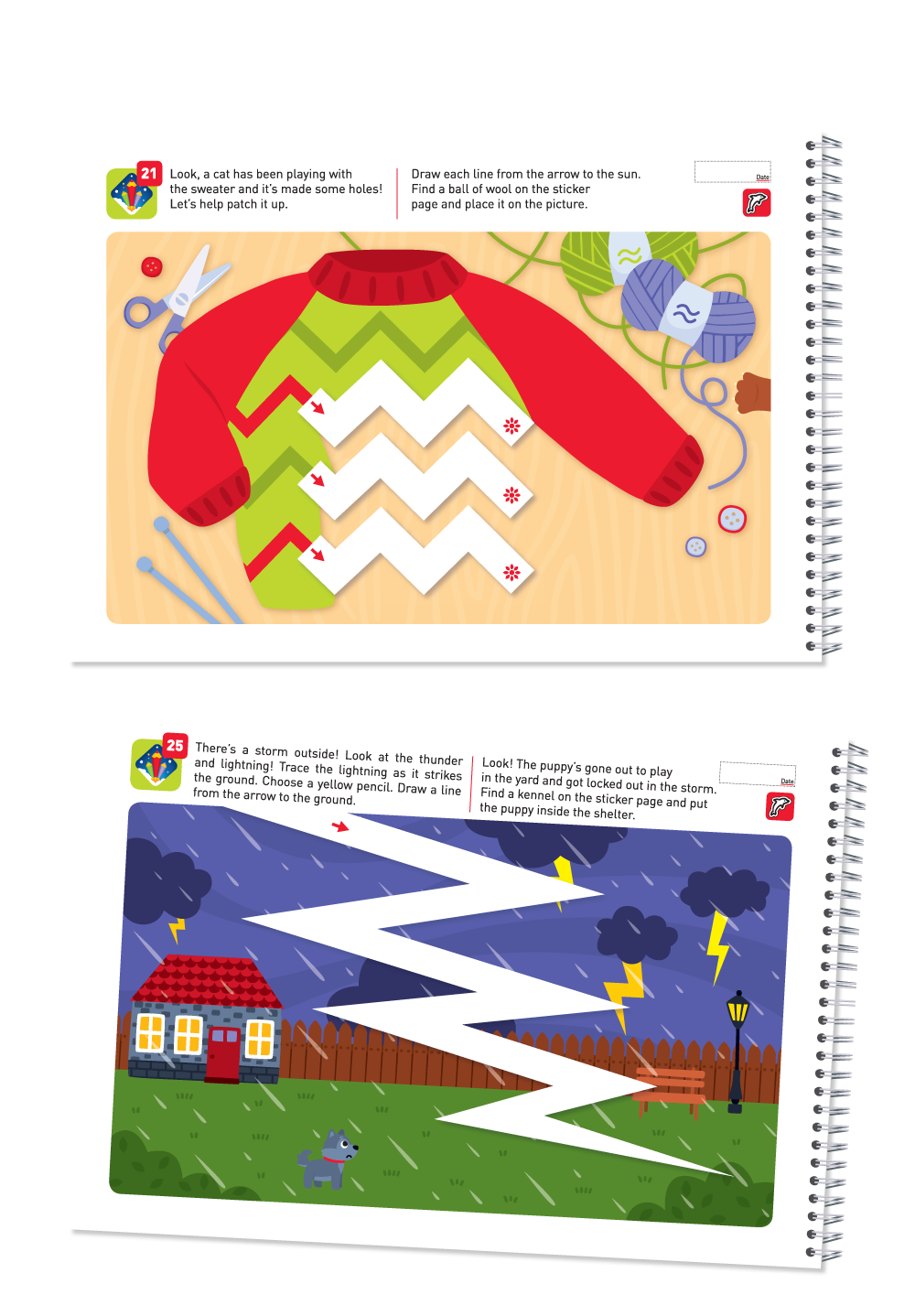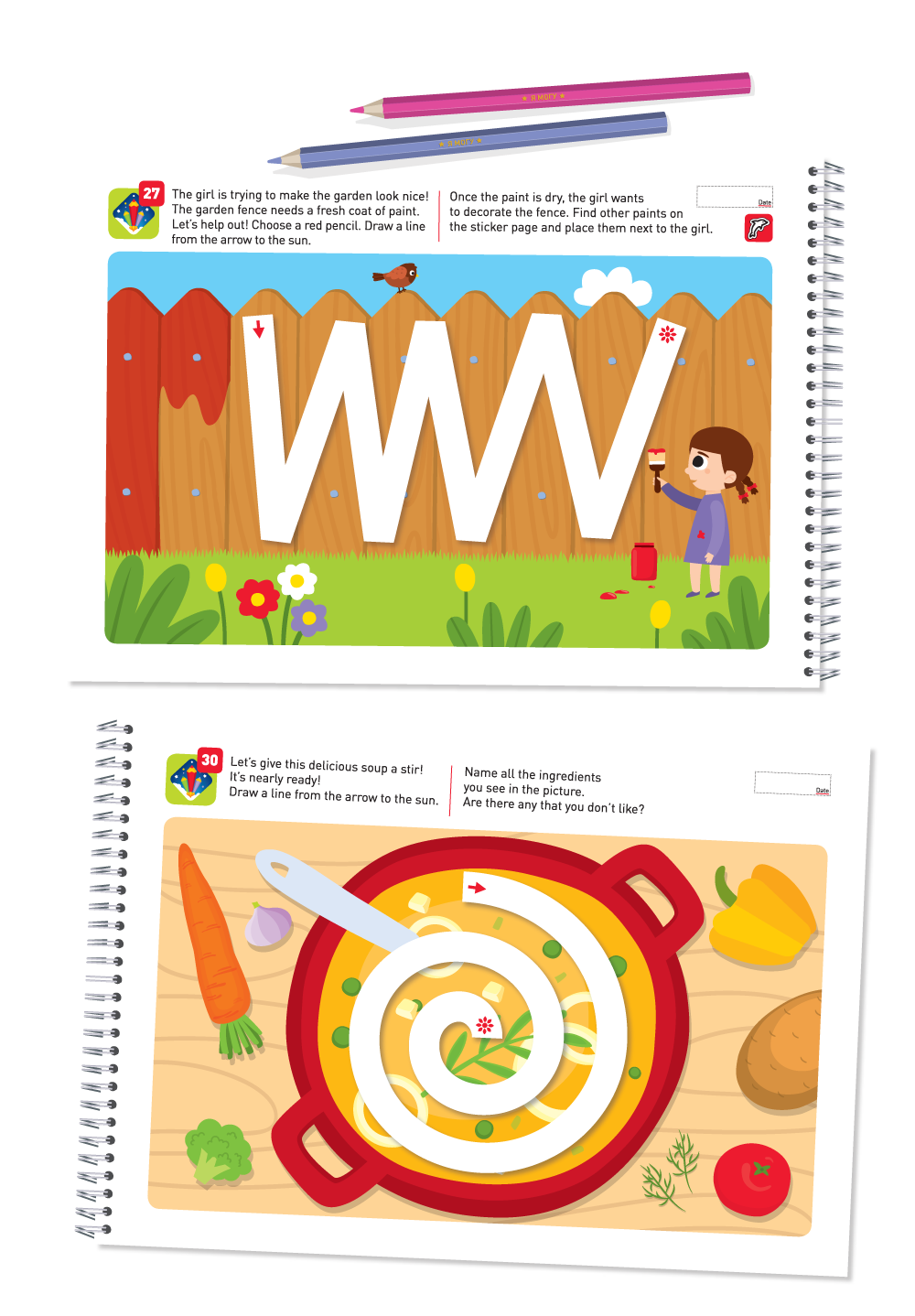I can do it! Tracing Skills. Age 2-3
Includes 63 tracing activities
- fun and engaging storylines
- prepares your child’s hand for writing by teaching them to draw shapes
- helps to improve attention skills
- develops fine motor skills
- 42 reusable stickers
- convenient format and open flat spiral binding
The book is printed on carefully chosen thick, matte paper – the paper texture is a little rough, which is ideal for drawing beginners.
I can do it! Tracing Skills. Age 2-3
- Offset paper
- 42 laminated stickers (1 page)
- 64 pages
- Spiral binding
- Weight: 305 g
- Size: A4
- Written by Natalya Lyalina, Irina Lyalina, Evgenia Lazareva
- Cover and interior design by Nina Konoplyanskaya
- Illustrated by Evgenia Salikhova, Anastasia Gileva
- Translated into English by Lidiia Veremeeva, Elena O’Neal
- Edited and proofread by Nadia Stulock, Manda Waller
I can do it! Tracing Skills. Age 2-3
- «Ребёнок занимается с удовольствием!»
- «Невозможно оттащить!»
About the Activity Book
Tracing helps prepare your child’s hand for writing. To show your child that learning can be enjoyable, we have made sure that each activity is engaging and age-appropriate.
Activities with a storyline
Simply drawing a line along a path might not keep your child interested for very long, but they will definitely enjoy painting a fence, diving into a pool and helping squirrels collect their nuts.
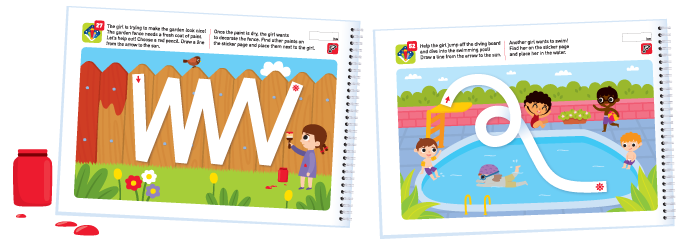
Develop empathy
The activities are designed to show your child the value of their work: "Show the girl where her bed is", "Help to hang up the laundry", "Move the fish to the bigger aquarium". This teaches your child to be kind and considerate of others.
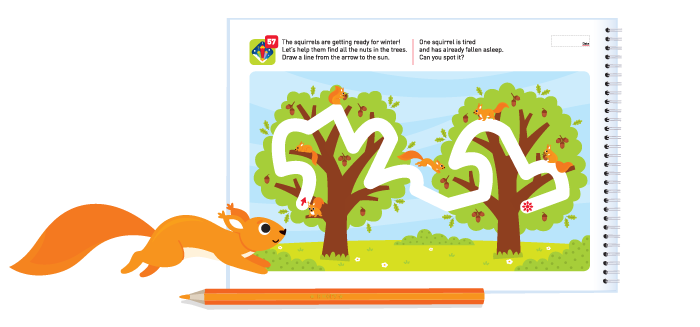
Gradual increase in difficulty
We start with simple tasks such as drawing a line while avoiding obstacles. It's important for your child to understand why it’s important to draw accurately and precisely – for example: "Slide down the hill on a sled, but don't crash into the trees!" Gradually the paths will get longer and narrower. By the end of the activity book, you'll be surprised at the intricate lines your child can draw.
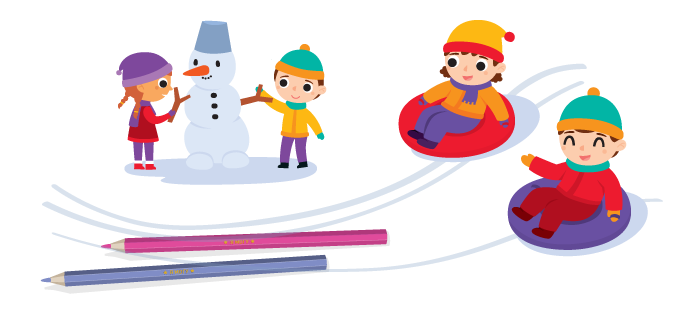
Lots of stickers
If your child is finding it hard to concentrate on drawing lines, the stickers will help them unwind and keep them interested in the activities. There are 42 stickers in this book – all of them are sturdy enough to peel off and reposition if necessary. Careful sticker placement is also good for fine motor skills!
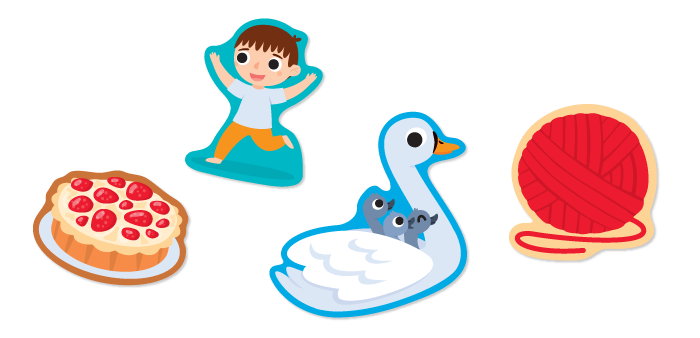
Interesting topics
Our activity book covers topics such as transport, sports, and plants and animals, along with other new topics for your toddler to discover. We believe that children quickly grasp new information, and they will get even more enjoyment out of learning when a grown-up is doing the activities along with them too.
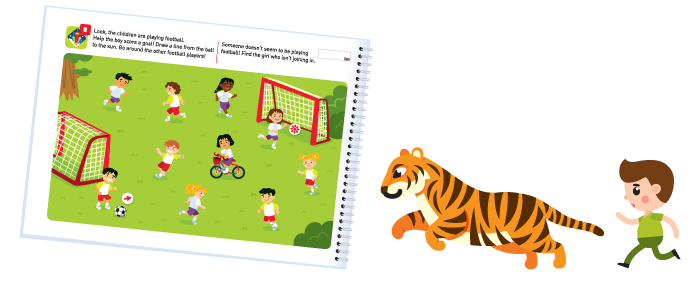
Spiral binding
We have carefully designed the convenient spiral binding so that the book will open flat and will not bend or get in the way of activities. This is especially important for young children.
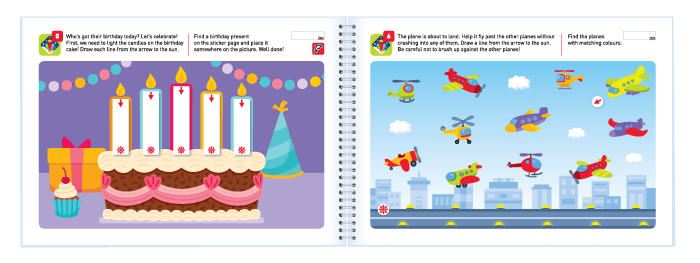
And at the end – a medal!
Here's the medal your child will receive at the end of the activity book!
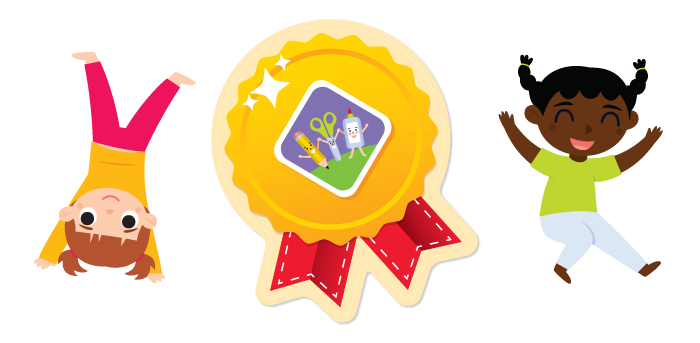
Useful Tips
Holding a pencil
The pencil should rest on the middle finger while the thumb and the index finger hold it in place. Your child should not grip the pencil too tightly.
The ring finger and the little finger may stay inside the palm or rest at the base of the thumb. If your child doesn’t want to hold the pencil correctly, don't worry. They will definitely get used to it. From time to time, remind them to take hold of the pencil as shown. Explain that this will prevent their hand from getting tired.
Choosing the right pencil
If your child doesn’t have much experience using pencils or crayons, we recommend choosing triangular-shaped writing utensils. This particular shape naturally enforces a proper grip.
Hexagonal or round crayons, or soft thick pencils, will suit more experienced children. Try different types of crayons and pencils to choose the one that is the best fit for your child.
What else to draw?
-
Our series includes "I can do it! Tracing skills" activity books for children aged 2-3 and 3-4.
-
With the help of "I can do it! Playing with Modelling Clay and Colour" activity books for children aged 2-3 and 3-4, your child will practise drawing simple pictures, colouring, and modelling with clay.
-
The "I can do it! Book of Mazes" activity books for children aged 2-3 and 3-4 will help train children’s hands, as well as develop diligence and the ability to finish what they started.
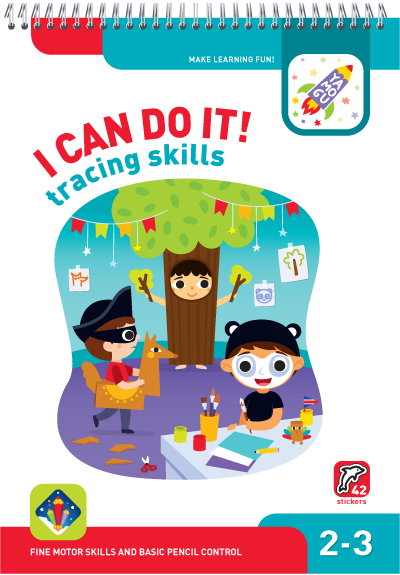
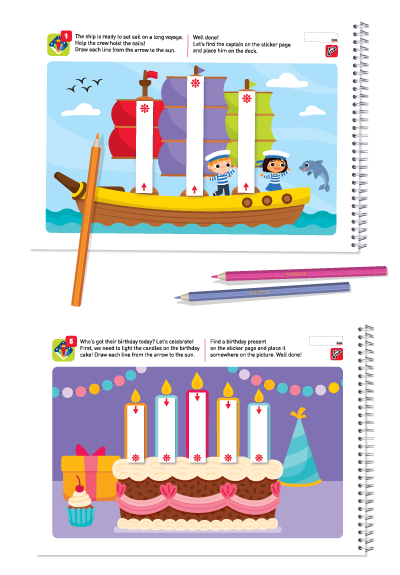
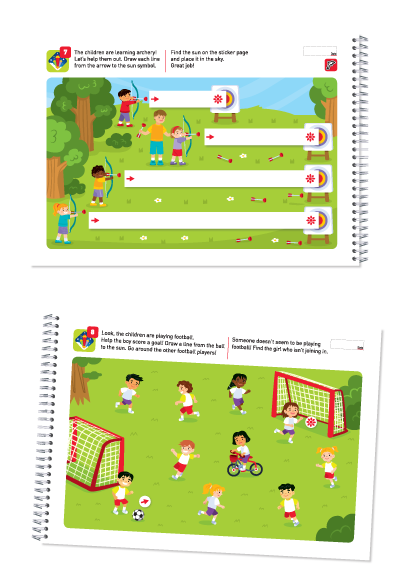
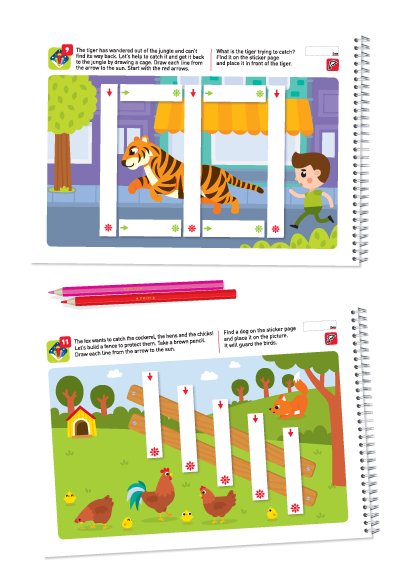
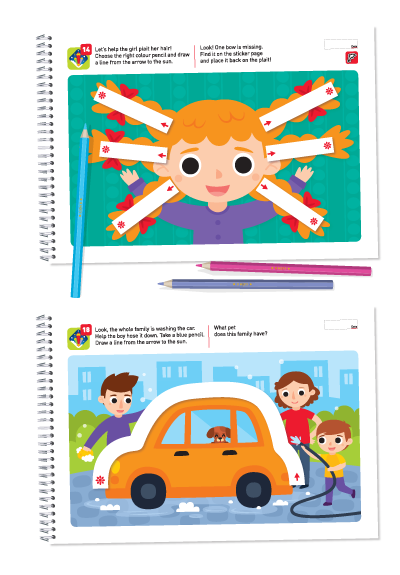
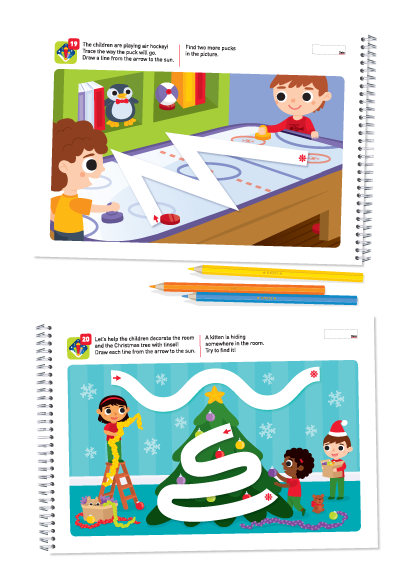
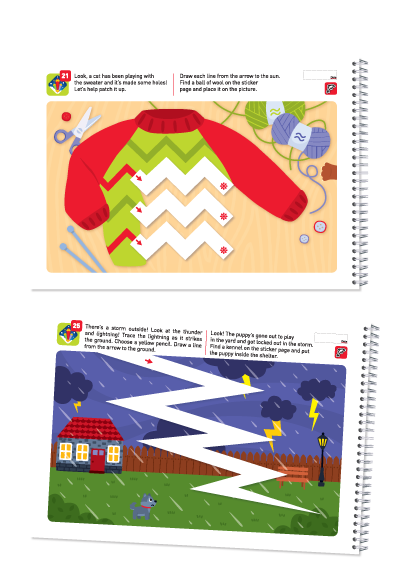
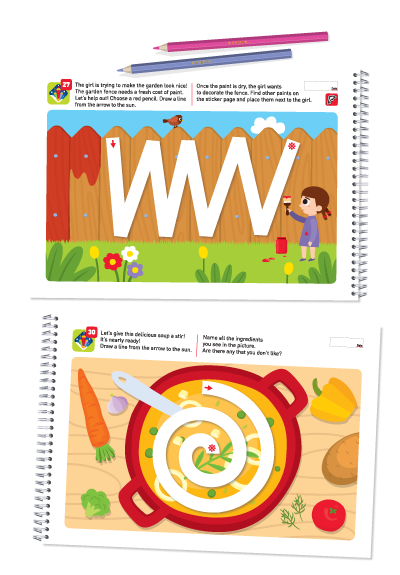

.png)
.png)
